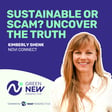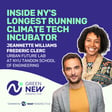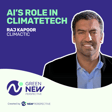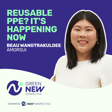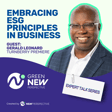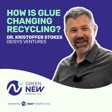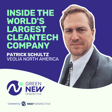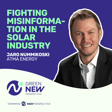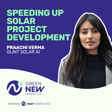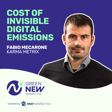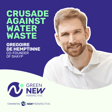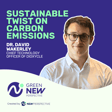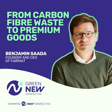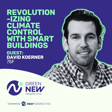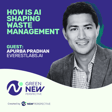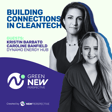
Are We Ready For Electric Boats? Podcast With Halevai
In our latest podcast episode, Frank Heidinger, founder of Halevai, discusses his shift from ocean conservation to launching an electric boat startup. He explains the development of Halevai’s innovative design, including their efficient trimaran hull, and how these boats are charged using existing marina infrastructure.
Frank highlights the challenges of pioneering in the clean tech sector, the importance of customer education, and details of Halevai’s debut model, the 2050. He concludes with advice for entrepreneurs in the clean tech space, focusing on the necessity of passion and adaptability.
🕑 KEY MOMENTS
==================
➜ 00:00 Welcome
➜ 02:43 Revolutionizing Watercraft With Renewable Energy
➜ 07:54 Sourcing American-Made Marine Systems
➜ 10:01 The Role of Marketing in Electric Boats
➜ 14:01 Eco-Friendly Boats for Research Institutions
➜ 19:06 Efficient Cruising Speed and Range
📚 RESOURCES & LINKS
========================
- Website: https://www.halevai.com/
- LinkedIn: https://www.linkedin.com/company/halevai/
- Instagram: https://www.instagram.com/halevaipower/
👉 Interview with Frank Heiding: https://www.npws.net/podcast/electric-boats-future
🌍 SUSTAINABILITY PODCAST CREATED BY NEW PERSPECTIVE
========================
This podcast is proudly sponsored by New Perspective Marketing, a dynamic growth marketing agency in Boston, MA, celebrating 20 years in business. We help sustainably focused B2B organizations grow their brands and scale up revenue. If you or your organization is looking to grow, visit npws.com for more info.
🎧 SUBSCRIBE TO OUR PODCAST
===========================
- Spotify: https://bit.ly/3PSWIyI
- Apple Podcasts: https://bit.ly/3RvlHte
- Youtube: https://bit.ly/3RDzkXg
- Deezer: https://bit.ly/3PvQaof
- Amazon Music: https://bit.ly/3PQlijS
- Zencastr: https://bit.ly/48xt75s
💬 FOLLOW US ON SOCIAL MEDIA
============================
- Instagram: https://www.instagram.com/greennewperspective/
- Twitter: https://twitter.com/gnperspective
- LinkedIn: https://www.linkedin.com/company/new-perspective-marketing/
- Facebook: https://www.facebook.com/greennewperspective
- TikTok: https://www.tiktok.com/@greennewperspective
Host: Dunja Jovanovic
Executive Producer: Marko Bodiroza
Creator: Nathan Harris
#cleantech #sustainability #podcast
